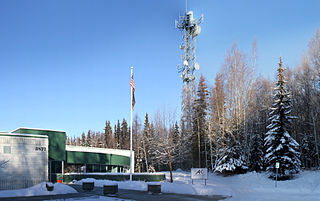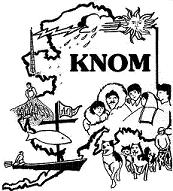Related Research Articles

The Canadian Broadcasting Corporation, branded as CBC/Radio-Canada, is a Canadian public broadcaster for both radio and television. It is a federal Crown corporation that receives funding from the government. The English- and French-language service units of the corporation are commonly known as CBC and Radio-Canada, respectively.
Public broadcasting involves radio, television and other electronic media outlets whose primary mission is public service. Public broadcasters receive funding from diverse sources including license fees, individual contributions, public financing and commercial financing.

National Educational Television (NET) was an American educational broadcast television network owned by the Ford Foundation and later co-owned by the Corporation for Public Broadcasting. It operated from May 16, 1954 to October 4, 1970, and was succeeded by the Public Broadcasting Service (PBS), which has memberships with many television stations that were formerly part of NET.
CBC Radio One is the English-language news and information radio network of the publicly owned Canadian Broadcasting Corporation. It is commercial-free and offers local and national programming. It is available on AM and FM to 98 percent of Canadians and overseas over the Internet, and through mobile apps. CBC Radio One is simulcast across Canada on Bell Satellite TV satellite channels 956 and 969, and Shaw Direct satellite channel 870.

Public Radio International (PRI) was an American public radio organization. Headquartered in Minneapolis, Minnesota, PRI provided programming to over 850 public radio stations in the United States.
American Indian Radio on Satellite or AIROS was a service that transmitted Native American radio programs between producers and radio stations via satellite. It also distributed radio programming directly to listeners via the Internet. Its satellite service ran from 1994 to 2006. It was operated by Native American Public Telecommunications.

It is generally recognized that the first radio transmission was made from a temporary station set up by Guglielmo Marconi in 1895 on the Isle of Wight. This followed on from pioneering work in the field by a number of people including Alessandro Volta, André-Marie Ampère, Georg Ohm and James Clerk Maxwell.

Alaska Public Media is a non-profit organization with member television and radio stations that are part of PBS, NPR and other public broadcasting networks. Formerly known as Alaska Public Telecommunications, Inc., Alaska Public Media relies upon several funding sources, including member donations, state and federal dollars, and grants from private foundations, the Corporation for Public Broadcasting (CPB), and other organizations.
KNBA is a radio station in Anchorage, Alaska. The station is currently owned by Koahnic Broadcast Corporation and primarily airs an adult album alternative music format, while incorporating programming from National Public Radio, Native Voice 1, Public Radio International and APRN.

KNOM and KNOM-FM are non-commercial Catholic radio stations in Nome, Alaska. The station owners and licensees are KNOM Radio Mission, Inc., a 501(c)3 nonprofit entity with seven board members. The FM signal has an effective radiated power (ERP) of 1,000 watts and covers the city of Nome and adjacent communities. KNOM AM 780 is considered a Class A station. By day, its signal is powered at 25,000 watts and can be heard as far north as Barter Island and as far south as the Alaska Peninsula, with regular coverage of approximately 100,000 square miles (260,000 km2). With a good radio, it can be heard into the Russian Far East. At night, power is reduced to 14,000 watts.
KOAN is a commercial radio station in Anchorage, Alaska. It is owned by Tetyana Sevvina Robbins through licensee Falcon Broadcasting LLC. KOAN is managed by Alaska Integrated Media, a company of six radio stations; three owned by AIM and three managed by the company. Its studios are located on Business Park Boulevard in Anchorage, and its transmitter is located in South Anchorage.

KSUT originally signed on as a non-commercial community radio station licensed to serve the community of Ignacio, Colorado. The station has since expanded to two distinct formats, Four Corners Public Radio, with a public radio format of NPR and music programming, and Southern Ute Tribal Radio, which airs Native American music and news. While the stations have different legal call letters, both stations still refer to themselves on-air, online, and in marketing as KSUT. The stations are owned by KSUT Public Radio, a non-profit corporation, and licensed to KUTE, Inc.
AK was a weekly radio program broadcast on the Alaska Public Radio network. Past episodes of AK are available through a podcast archive.

The Aboriginal Peoples Television Network is a Canadian specialty channel. Established in 1992 and maintained by governmental funding to broadcast in Canada's northern territories, APTN acquired a national broadcast licence in 1999. It airs and produces programs made by, for and about Indigenous peoples in Canada and the United States. Based in Winnipeg, Manitoba, it is the first network by and for North American indigenous peoples.
KUSW is a non-commercial radio station licensed to Flora Vista, New Mexico, United States. KUSW is owned by KUTE, Inc., and serves the Four Corners area.
Koahnic Broadcast Corporation (KBC) is a nonprofit media center that provides Native radio programming through Alaska Native governance and operation. KBC’s radio programming consists of National Native News, Native America Calling, and Indigefi, some of which can be heard nationally through their Native Voice One service. KBC also owns and operates KNBA located in Anchorage, Alaska, the first Native radio station in an urban market, and Rising Indigenous Voices Radio (RIVR), an internet radio station streaming modern Native music.

National Public Radio is an American privately and state funded nonprofit media organization headquartered in Washington, D.C., with its NPR West headquarters in Culver City, California. It differs from other non-profit membership media organizations such as the Associated Press, in that it was established by an act of Congress. Most of its member stations are owned by non-profit organizations, including public school districts, colleges, and universities. It serves as a national syndicator to a network of over 1,000 public radio stations in the United States. As of September 2013, NPR employed 840 people.

The Public Broadcasting Service (PBS) is an American public broadcaster and non-commercial, free-to-air television network based in Arlington, Virginia. PBS is a publicly funded nonprofit organization and the most prominent provider of educational programming to public television stations in the United States, distributing shows such as Frontline, Nova, PBS NewsHour, Sesame Street, and This Old House.
Radio was introduced in Canada in the late 1890s, although initially transmissions were limited to the dot-and-dashes of Morse code, and primarily used for point-to-point services, especially for maritime communication. The history of broadcasting in Canada dates to the early 1920s, as part of the worldwide development of radio stations sending information and entertainment programming to the general public. Television was introduced in the 1950s, and soon became the primary broadcasting service.
References
- ↑ "National Native News". yellowstonepublicradio.org. Yellowstone Public Radio . Retrieved 13 January 2015.
- ↑ "National Native News (NNN) celebrates its 25th anniversary". cpb.org. Corporation for Public Broadcasting. Retrieved 12 January 2015.
- ↑ Montoya, Isaiah (19 March 2011). "The Native Voice". Navajo Times. Retrieved 12 January 2015.
- ↑ "'National Native News' moving to New Mexico". Juneau Empire . 11 March 2003. Retrieved 12 January 2015.
- ↑ "Indian Country News". tribal-institute.org. Tribal Law and Policy Institute. Retrieved 12 January 2015.
- ↑ "Station Affiliates". nativenews.net. National Native News. Retrieved 12 January 2015.
- ↑ Keith, Michael (1995). Signals in the Air: Native Broadcasting in America. Praeger. p. 12. ISBN 0275948765.